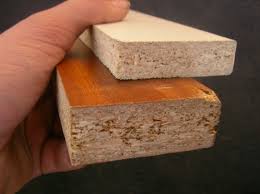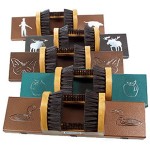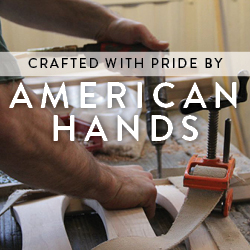
Source: Inhabitat
Solid wood is among some of the most desired furniture materials on the market. Many consumers search for pieces with the look and quality of solid wood furniture. Due to this, it is not uncommon to find various materials that mock solid wood but are in fact engineered woods. These engineered woods, such as plywood, fiberboard, and laminate are more cost effective for the manufacturer. However, as a consumer, it is important not to be fooled into purchasing furniture that falsely appears to be made of solid wood.
It’s very popular for manufacturers to use veneers or laminates, meaning that an inexpensive backer is topped with a very thin layer of solid wood. These materials appear to be solid wood but when the thin layer of laminate cracks, the backer is exposed. A piece of furniture constructed of only solid wood will not encounter this problem. Also, these engineered woods are more prone to denting, as the backers are much softer than a real solid wood piece of furniture. When this happens, repairs are almost impossible.
Thirdly, the staining of an engineered wood will not look the same as solid wood. Natural woods have a porous surface while laminate placed over a backer does not, potentially making the refinishing of an engineered wood highly unsuccessful. Lastly, the layers of these furniture grade laminates or veneers are inclined to break down and separate over time, whether it be due to the aging of the glue or humidity.
Now that you know some of the benefits of solid wood versus engineered wood, how do you spot an impostor? There are a few steps you can take when searching for solid wood furniture. Find a portion of unfinished wood on the item and take a close look at the edges of the wood. If you see anything other than natural end grain, chances are that the piece could be a fake.
Are there caps on the edges of the furniture? If so, this could be because the manufacturer has made an attempt to hide the man-made backer. Another sign of impostor wood is the pattern in the grain. If the repetition in the pattern appears to be too perfect then there is a chance that it has been engineered.
So, if you’re in the market for new furniture and you prefer solid wood, use these methods to ensure that you’re buying a durable and high quality American made product, as opposed to a more flimsy one constructed of man-made materials!
Via: Beds By George





Mayo Furniture Made in the Heart of Texas
American Made Furniture
Solid Wood: Customization and Attention to Detail